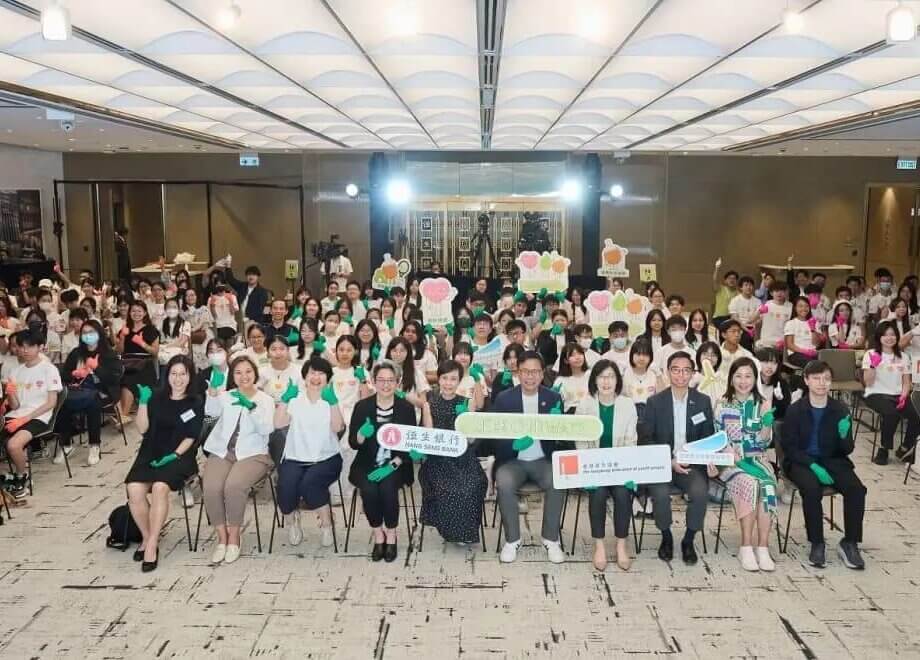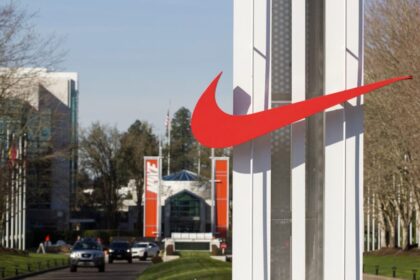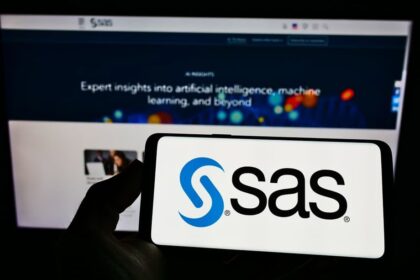Teenage Inventors Lead the Charge Against Plastic Waste
In a world grappling with the mounting crisis of plastic pollution, a group of teenage girls from Hong Kong has emerged as a beacon of hope. Their invention—an edible, fully biodegradable plastic alternative—recently won top honors at the inaugural Seek Our Ways Social Ideation Programme, a competition designed to inspire youth-driven solutions to pressing environmental and societal challenges. This breakthrough not only highlights the ingenuity of young minds but also signals a growing global movement toward sustainable materials and social innovation.
- Teenage Inventors Lead the Charge Against Plastic Waste
- What Inspired the Edible Plastic Invention?
- How Does Edible Biodegradable Plastic Work?
- Challenges and Opportunities in Scaling Edible Plastics
- The Seek Our Ways Social Ideation Programme: Fostering Youth Innovation
- Other Winning Innovations: Beyond Edible Plastics
- Why Is Social Innovation Important in the Fight Against Plastic Pollution?
- Looking Ahead: The Future of Edible and Biodegradable Plastics
- In Summary
What Inspired the Edible Plastic Invention?
The winning team, comprised of four Form Three students from Good Hope School—Ho Lok-ting, Law Hau-wing, Lo Sin-sum, and Tsang Lok-yu—was motivated by the devastating impact of plastic waste on marine life. After learning about the high mortality rates among sea turtles due to plastic ingestion, the students set out to create a practical, environmentally friendly alternative to single-use plastics. Their solution: a material made from gelatin and agar that is not only biodegradable but also edible, dissolving harmlessly in the environment.
Team member Law Hau-wing explained the urgency of their mission:
“Traditional plastic lingers for centuries as it’s non-biodegradable and harmful to the environment. Our ‘Fully Biodegradable Plastic’, however, disappears without a trace. We hope to collaborate with food manufacturers to bring the product to market.”
Over 200 hours were spent designing, developing, and testing two prototypes suitable for packaging dry foods or even serving as shopping bags. The result is a material that can help reduce the reliance on conventional plastics, which persist in the environment for hundreds of years and pose a significant threat to wildlife and ecosystems.
How Does Edible Biodegradable Plastic Work?
The concept of edible, biodegradable plastics is not entirely new, but the approach taken by the Good Hope School team is both innovative and practical. Their prototypes use gelatin—a protein derived from animal collagen—and agar, a gelatinous substance obtained from seaweed. Both materials are commonly used in food products and are recognized for their ability to form flexible, water-resistant films.
When combined, gelatin and agar create a composite that can be molded into thin sheets or bags. These materials are safe for consumption, dissolve in water, and break down naturally in the environment, leaving no toxic residue. This makes them ideal for applications such as food packaging, where the packaging itself could be safely eaten or composted after use.
Global Context: The Rise of Edible Plastics
The Hong Kong students’ invention is part of a broader trend of youth-led innovation in the fight against plastic pollution. For example, in the United States, 12-year-old Madison Checketts developed the “Eco-Hero,” an edible water bottle made using a process called reverse spherification. This technique, which originated in molecular gastronomy, involves creating a gel membrane around a liquid using food-safe chemicals like calcium lactate and sodium alginate. The result is a water bottle that can be eaten or composted, offering a creative alternative to single-use plastic bottles.
Similarly, the “Ooho” water bottle, developed by students at Imperial College London, uses a comparable method to encase water in an edible membrane. These innovations demonstrate the potential for edible plastics to address the global challenge of single-use waste, particularly in applications where traditional recycling is impractical or ineffective.
Challenges and Opportunities in Scaling Edible Plastics
While the promise of edible, biodegradable plastics is clear, several challenges remain before these materials can be widely adopted. One key issue is durability: edible plastics must be strong enough to protect their contents during transport and storage, yet dissolve or degrade quickly after use. Achieving the right balance between strength, flexibility, and biodegradability requires careful formulation and testing.
Another consideration is safety. Although materials like gelatin and agar are generally recognized as safe for consumption, large-scale production must ensure consistent quality and prevent contamination. Regulatory approval and consumer acceptance are also critical factors, especially when introducing edible packaging into the food supply chain.
Expert Perspectives
Daniel Rittschof, an environmental scientist at Duke University, notes the importance of continued experimentation and refinement:
“This is the kind of innovation that people need to do, and they need to figure out how to move forward. [Checketts] is on the right path, because she wants to make a difference, and she’s learning chemistry and biology and a little bit of business.”
Rittschof also highlights practical concerns, such as the safety of consuming the packaging, the presence of trace chemicals, and the logistics of transporting edible containers without damage. These challenges underscore the need for ongoing research and development to bring edible plastics from the laboratory to the marketplace.
The Seek Our Ways Social Ideation Programme: Fostering Youth Innovation
The Seek Our Ways Social Ideation Programme, supported by Hang Seng Bank and organized by the Leadership Institute of The Hong Kong Federation of Youth Groups (HKFYG), aims to empower young people to address real-world problems through creative solutions. The inaugural edition attracted nearly 1,000 applications from secondary and tertiary students, with over 400 participants forming teams to tackle issues in environmental sustainability, sports, and elderly wellness.
Over six months, students dedicated more than 10,000 hours to experiential learning and mentorship, guided by social leaders and professionals. The competition culminated in nearly 90 socially innovative proposals, with nine teams advancing to the finals. Winners were selected based on the effectiveness, innovation, scalability, and presentation of their solutions.
Diana Cesar, Executive Director and Chief Executive of Hang Seng Bank, emphasized the bank’s commitment to nurturing the next generation of social innovators:
“As Hong Kong’s largest local bank, Hang Seng Bank is proud to put our network, expertise, and resources behind young social innovators. Programmes like this demonstrate how we turn belief in the next generation into action – equipping students to tackle real-world challenges while expanding their own potential.”
Other Winning Innovations: Beyond Edible Plastics
The competition also recognized outstanding projects in other categories. In the senior secondary division, a team from Fanling Kau Yan College proposed a model to pair schools with elderly centers, fostering intergenerational engagement and emotional well-being. Their “One School, One Elderly Centre” initiative includes a matching service, sustainable curriculum, and recommended activities to strengthen connections between students and older adults.
At the tertiary level, a cross-university team developed “Fruitful,” a project that transforms apple pulp—a byproduct of juice production—into a leather-like material. After six months of research and experimentation, the team produced a sustainable alternative to synthetic fabrics, with potential applications in wallets, coasters, and other accessories. Their work aims to reduce reliance on petroleum-based materials and promote circular economy practices in Hong Kong.
All three winning teams received cash prizes of HK$20,000 and career immersion opportunities at Hang Seng Bank. Additionally, public voting awarded each team’s favorite project an extra HK$5,000, further encouraging youth participation in social innovation.
Why Is Social Innovation Important in the Fight Against Plastic Pollution?
Plastic pollution is a global crisis, with millions of tons of plastic waste entering the oceans each year. Single-use plastics, such as bags, bottles, and packaging, are particularly problematic because they are used briefly but persist in the environment for centuries. Marine animals, including sea turtles, birds, and fish, often mistake plastic debris for food, leading to injury or death. Microplastics—tiny fragments resulting from the breakdown of larger items—have been found in water, soil, and even the food we eat.
Traditional solutions, such as recycling and waste management, are important but insufficient to address the scale of the problem. Social innovation—creative, community-driven approaches to solving societal challenges—offers a complementary path forward. By empowering young people to develop new materials, rethink product design, and promote sustainable behaviors, initiatives like the Seek Our Ways Social Ideation Programme can accelerate the transition to a circular, low-waste economy.
Looking Ahead: The Future of Edible and Biodegradable Plastics
The success of the Good Hope School team and other young inventors demonstrates the potential of edible and biodegradable plastics to transform the way we package and consume goods. As research continues and prototypes are refined, these materials could become viable alternatives to conventional plastics in a range of applications, from food packaging to single-use containers.
However, widespread adoption will require collaboration among inventors, manufacturers, regulators, and consumers. Investment in research and development, clear safety standards, and public education are essential to ensure that edible plastics are both effective and accepted by the market. As more young people are inspired to tackle environmental challenges, the pace of innovation is likely to accelerate, bringing us closer to a world where plastic pollution is a problem of the past.
In Summary
- Four teenage girls from Good Hope School in Hong Kong won a major social innovation competition with their edible, biodegradable plastic alternative made from gelatin and agar.
- The invention addresses the urgent problem of plastic pollution, particularly its impact on marine life such as sea turtles.
- The Seek Our Ways Social Ideation Programme encourages youth to develop creative solutions to environmental and societal challenges, with nearly 1,000 students participating in its inaugural edition.
- Other winning projects included initiatives to foster intergenerational engagement and to create sustainable leather-like materials from apple pulp.
- Edible and biodegradable plastics are part of a growing global movement, with similar innovations emerging from young inventors worldwide.
- Challenges remain in scaling edible plastics, including durability, safety, and consumer acceptance, but ongoing research and collaboration offer hope for widespread adoption.
- Social innovation led by youth is a powerful force in the fight against plastic pollution and the transition to a more sustainable future.












